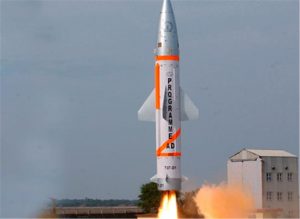India’s Defence Establishment achieved a milestone when the DRDO successfully test fired an interceptor missile on February 11, 2017. The interceptor missile was launched from Abdul Kalam Island of the Integrated Test Range off the coast of Odisha at about 7:45 am. This is a significant achievement in India’s quest to develop a two-layered ballistic missile defence system. This successful test represents the sweat and toil of Indian scientists who worked on this technology for 19 years.
Features of the interceptor missile
The Interceptor Missile is a single stage guided missile which is powered by a solid state rocket and is equipped with a navigation system, high-tech computer and an electromechanical activator. The Interceptor Missile has its own mobile launcher which is highly beneficial for the defence forces. The missile also possesses a secure data link for interception, independent tracking and homing capabilities.
How does the missile operate?
The interceptor missile launched by India is capable of destroying any incoming ballistic missile at low altitudes. This feat becomes more important in light of the dangers faced by India from its two nuclear armed neighbours, China and Pakistan.

The test mission involved the launching of the interceptor missile and a two stage ballistic missile which mimicked a hostile ballistic missile approaching from the Bay of Bengal. The target missile was launched from a ship at a distance of 2000 km from the tests site. The operation was entirely automatic with radar based detection and tracking system tracking the enemy’s ballistic missile. The trajectory of the incoming ballistic missile was predicted by a computer network on the basis of the data received from the radar and tracking system.
The Interceptor missile was launched after the computer system gave the necessary command for lift-off. The Interceptor missile was guided by the high accuracy Inertial Navigation System which was supported by a Redundant Micro Navigation System towards the point of interception of the incoming missile.
As soon as the missile crossed the atmosphere, the heat shield protecting the missile from extreme temperatures ejected, thereby, exposing the IR seeker dome which helped the missile in homing in on the target missile.
The hostile incoming missile was destroyed by the interceptor in mid-air at an endoatmospheric altitude according to the officials of DRDO. The effect was analysed by scientists through data gathered from many tracking sources.
The entire operation was monitored in real-time by the Telemetry stations which were located at various points.













